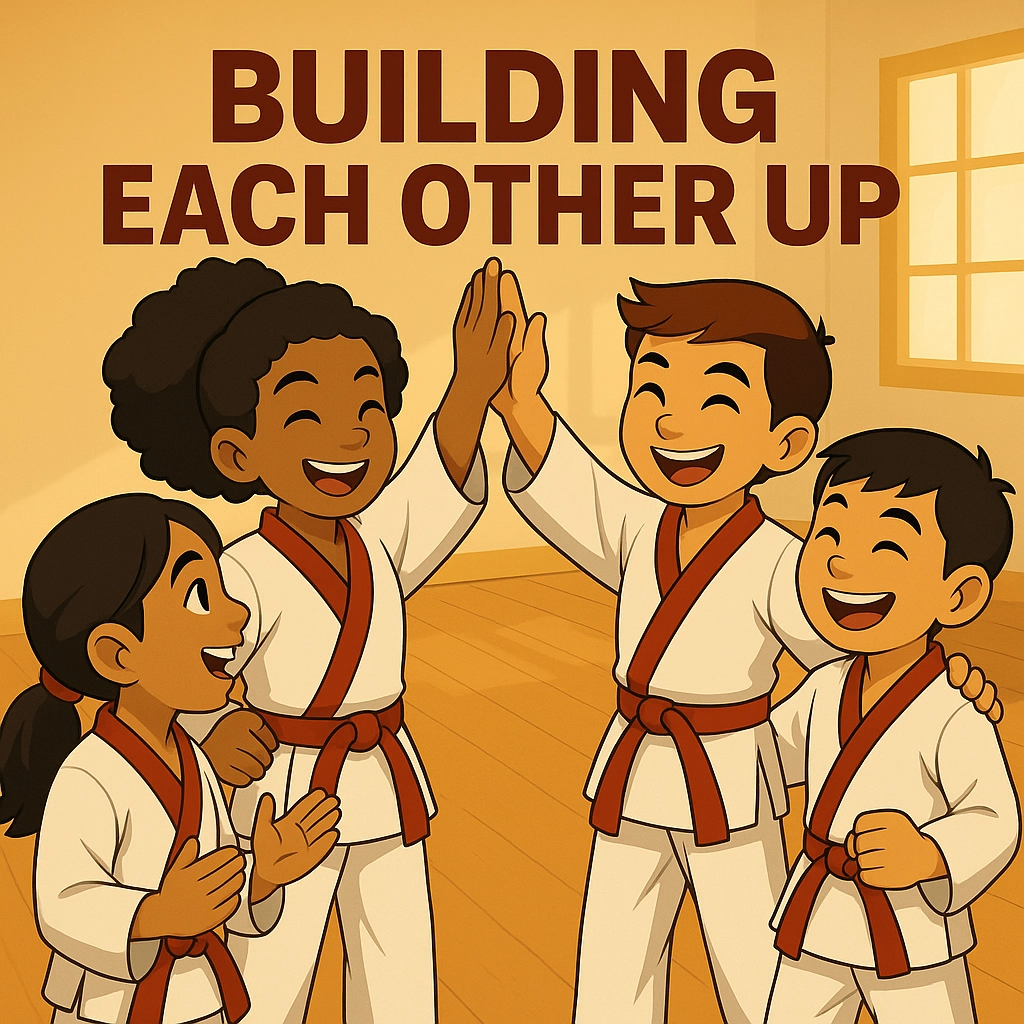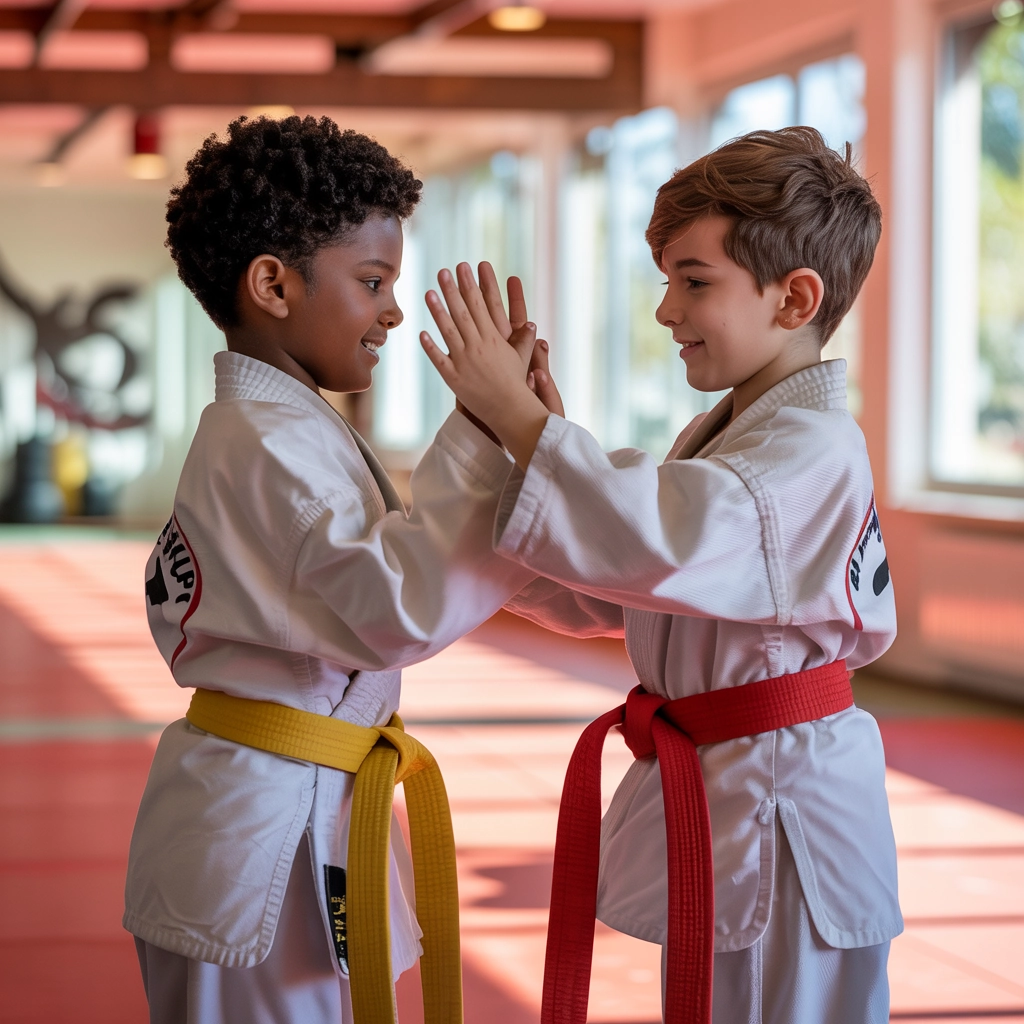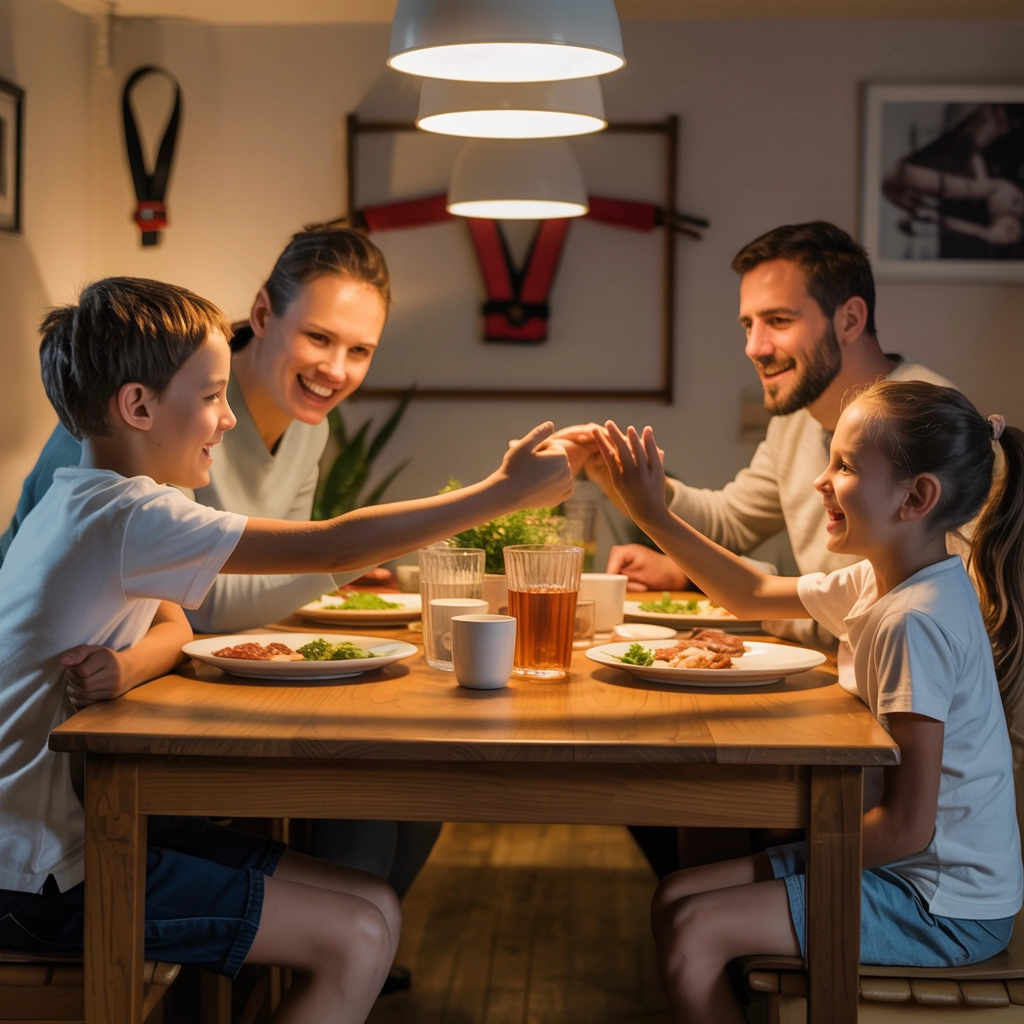
Building Each Other Up: Positive Talk with Peers at CLMA
July 1, 2025

Building Each Other Up: Positive Talk with Peers at CLMA
The Power of Positive Words in Martial Arts
At Changing Lives Martial Arts, we believe that martial arts training extends far beyond physical techniques. While punches, kicks, and forms are essential components of our curriculum, the way our students communicate with each other can be just as impactful as a well-executed sidekick. Positive communication between peers creates the supportive environment that allows everyone to grow, take risks, and reach their full potential.
Think about it: When was the last time criticism helped you perform better immediately? For most of us, encouragement and positive feedback create the confidence we need to improve. This principle is especially important for martial artists of all ages, but particularly for our younger students who are developing communication habits that will last a lifetime.
Why Words Matter on the Mat
Martial arts training naturally creates vulnerable moments. Students attempt new techniques, sometimes stumble through forms, and occasionally face the challenge of sparring with a partner. These moments require courage, and how peers respond can either build or diminish that courage.
When a fellow student says, “Great job keeping your guard up!” instead of “You keep dropping your hands,” the learning experience transforms. The first approach acknowledges what’s working (maintaining a proper guard sometimes) while encouraging improvement. The second focuses only on failure, which can trigger discouragement and frustration.
At CLMA, we’ve observed something remarkable: dojos with strong positive peer communication tend to produce not just technically skilled martial artists, but confident human beings who uplift others in all areas of life.
How We Foster Positive Peer Communication at CLMA
Creating a culture of positive communication doesn’t happen by accident. Here’s how we intentionally build this skill into every class:
1. Modeling by Instructors
Our instructors set the tone by demonstrating positive communication themselves. You’ll hear them say things like:
- “I love the power you’re generating in that kick!”
- “Your focus has improved so much since last month.”
- “That was challenging, but you kept trying—that’s what matters most.”
By consistently focusing on strengths while coaching for improvement, instructors show students how to communicate effectively with each other.
2. Partner Work with Communication Guidelines
When students pair up for drills or sparring, we provide specific communication frameworks:
- Start with something positive: “Your blocks are really strong today.”
- Offer constructive feedback as a question: “What if you tried pivoting your foot more?”
- End with encouragement: “Let’s try it again—I know you’ll get it!”
This three-part approach helps students learn to give feedback that’s both honest and supportive.
3. Celebration Circles
At the end of many classes, we gather students in a circle and invite them to recognize a peer who showed improvement, determination, or helped others. This ritual reinforces the importance of noticing and vocalizing the strengths we see in others.
One parent recently shared: “My son used to only focus on what he couldn’t do. After three months at CLMA, he now points out what he’s improving at—and does the same for his little sister at home.”
4. The “Power Phrase” Practice
Each testing cycle, students learn a new “power phrase”—a positive statement they can use with training partners. Phrases like “You’ve got this!” or “One more try—you’re almost there!” become part of their regular vocabulary.
We also teach students to replace self-defeating language (“I can’t do this”) with growth-oriented statements (“This is challenging, but I’m getting better”).
Real Examples of Positive Peer Talk in Action
The impact of positive communication becomes clearer through real examples from our classes:
Scenario 1: New Student Struggles
During a recent beginner class, 8-year-old Jamie was having trouble with a basic front kick. His training partner, Sophia, noticed his frustration and said, “Your balance is getting better each time. Remember how our instructor says to focus on one thing at a time? Let’s just work on your chamber position first.” By the end of class, Jamie had made significant progress—not just in his kick technique, but in his willingness to keep trying.
Scenario 2: Testing Preparation
Before a recent belt testing, a group of teen students organized their own practice sessions. Instructors observed them coaching each other with comments like, “Your form looks sharp—just remember to breathe through the middle section” and “That was your best one yet!” The result? One of our most successful group testings, with students showing remarkable confidence and precision.
The Ripple Effects of Positive Peer Communication
The benefits of positive communication extend far beyond improved martial arts performance:
1. Enhanced Learning Environment
When students know they won’t be ridiculed for mistakes, they’re more willing to ask questions, attempt challenging techniques, and push beyond their comfort zones. This psychological safety accelerates learning and development.
2. Stronger Community Bonds
Students who regularly encourage each other develop deeper friendships. We’ve seen training partners become best friends, study buddies, and sources of support through life’s challenges. As one parent noted in a recent review: “CLMA is a place where students are celebrated and encouraged to try new things.”
3. Leadership Development
Learning to communicate positively with peers is essential for leadership. Our senior students who master this skill often become the most effective junior instructors and role models for newer students.
4. Transfer to Other Areas of Life
The communication skills developed at CLMA transfer to school, home, and eventually the workplace. Parents regularly report improvements in how their children communicate with siblings, classmates, and teachers after implementing our positive communication practices.
Bringing Positive Peer Talk Home: Tips for Parents
Parents play a crucial role in reinforcing the positive communication skills learned at CLMA. Here are practical ways to support this development:
1. Create a “Strength-Spotting” Routine
At dinner, invite each family member to share something they noticed another family member doing well that day. This simple ritual trains the brain to look for positives rather than focusing exclusively on problems.
2. Reframe Negative Self-Talk
When you hear your child say something like “I’m terrible at math,” guide them toward a more constructive statement: “This math concept is challenging for me right now, but I’m working on it.”
3. Model Positive Communication Yourself
Children learn more from what we do than what we say. Practice positive self-talk out loud (“This is difficult, but I’m making progress”) and positive communication with others (“I appreciate how carefully you listened to my concern”).
4. Create Opportunities for Peer Teaching
Encourage your child to teach a sibling or friend something they’ve learned at martial arts class. Provide coaching on how to give instructions positively: “Start with what they’re doing right, then add one small suggestion for improvement.”
5. Discuss Media Examples
When watching movies or TV shows together, point out examples of positive and negative peer communication. Ask your child how different words might have changed the outcome of a challenging interaction between characters.
The Science Behind the Strategy
Research consistently shows that positive communication environments improve learning outcomes. One study found that teams with a 5:1 ratio of positive to negative interactions outperformed groups with lower ratios. Another study revealed that positive feedback activates brain regions associated with reward and motivation, while criticism can trigger defensive responses that actually inhibit learning.
This science aligns perfectly with what we’ve observed at CLMA: students flourish in an environment where peers build each other up rather than tear each other down.
Join Our Community of Positive Communication
At Changing Lives Martial Arts, we’re committed to developing not just physical skills, but the whole person—including how students communicate with themselves and others. The positive peer communication practices we teach become lifelong skills that serve students well beyond the dojo.
If you’re not yet part of our CLMA family but are interested in how martial arts can develop these essential life skills in your child, we invite you to schedule a visit. See firsthand how our instructors, including Shannon Guse, Matthew Guse, and Chief Instructor Lainalee Rambow, build communication skills while teaching martial arts techniques. New students often remark on the encouraging atmosphere from their very first class, as noted in this review from a new member: “I tried the first class and found home. I loved it!”
In a world where negative communication often dominates, we’re creating a different kind of community—one positive interaction at a time. And that might be the most important martial arts lesson of all.
Have you noticed positive changes in how your child communicates since joining CLMA? We’d love to hear your stories in the comments below!

